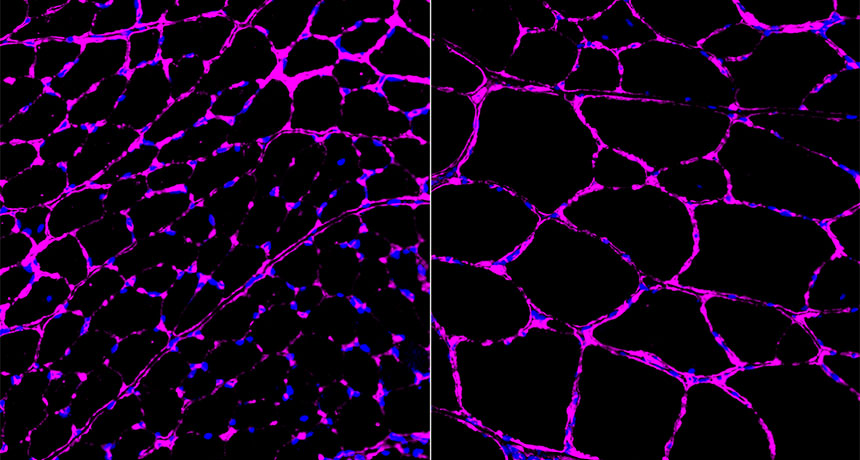
PUMP IT UP
A new twist on gene editing makes the CRISPR/Cas9 molecular scissors act as a highlighter for the genetic instruction book.
Such highlighting helps turn on specific genes.Using the new tool, researchers treated mouse versions of type 1 diabetes, kidney injury and Duchenne muscular dystrophy, the team reports December 7 in Cell. The new method may make some types of gene therapy easier and could be a boon for researchers hoping to control gene activity in animals, scientists say.
CRISPR/Cas9 is a two-part molecular scissors. A short, guide RNA leads the DNA-cutting enzyme Cas9 to specific places in the genetic instructions that scientists want to slice. Snipping DNA is the first step to making or fixing mutations. But researchers quickly realized the editing system could be even more versatile.
In the roughly five years since CRISPR/Cas9 was first wielded, researchers have modified the tool to make a variety of changes to DNA (SN: 9/3/16, p. 22). Many of those modifications involve breaking the Cas9 scissors so they cannot cut DNA anymore. Strapping other molecules to this “dead Cas9” allows scientists to alter genes or change the genes’ activities.
Gene-activating CRISPR/Cas9, known as CRISPRa, could be used to turn on dormant genes for treating a variety of diseases. For instance, doctors might be able to turn on alternate copies of genes to compensate for missing proteins or to reinvigorate genes that grow sluggish with age. So far, researchers have mostly turned on genes with CRISPRa in cells growing in lab dishes, says Charles Gersbach, a biomedical engineer at Duke University not involved in the new study.
Being able to precisely turn on genes within an animal and influence the animal’s health is a “great advance,” Gersbach says. It has been difficult to do before because CRISPR activators are too big to fit inside viruses needed to deliver the tools to body cells.
In the new study, Juan Carlos Izpisua Belmonte of the Salk Institute for Biological Studies in La Jolla, Calif., and colleagues shrank the tool. This time, the researchers “killed” and modified the guide RNA instead of…
The post CRISPR/Cas9 can reverse multiple diseases in mice appeared first on FeedBox.